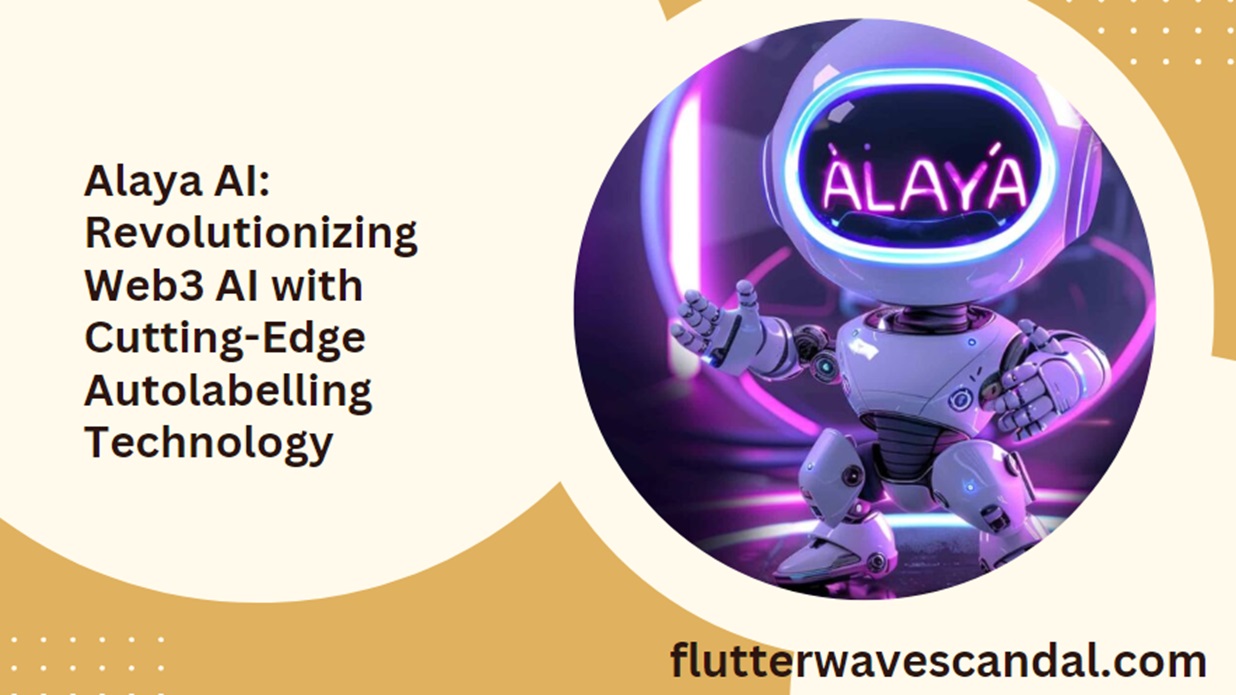
alaya ai
Introduction
In the rapidly evolving landscape of artificial intelligence and blockchain technology, Alaya AI stands out as a pioneering force, pushing the boundaries of data autolabelling with a robust and sophisticated platform architecture. Alaya AI’s platform is designed to seamlessly integrate with the Web3 ecosystem, offering unparalleled support for AI data autolabelling through a tri-layered system. This article delves into the intricacies of Alaya AI’s innovative architecture, exploring its layers—Interaction, Optimization, and Intelligent Modelling—and how these components synergize to create a dynamic, efficient, and user-centric autolabelling solution.
Table of Contents
The Three Layers of Alaya AI
Alaya AI’s platform is structured into three interoperable layers, each serving a unique and crucial role in the data autolabelling process. These layers are designed to provide real-time feedback and support reinforcement learning and fine-tuning for autolabelling models, ensuring optimal performance and accuracy.
1. The Interaction Layer
The Interaction Layer serves as the user frontend of the Alaya AI platform, acting as the primary interface through which users interact with the system. This layer is designed to be accessible and user-friendly, providing a gamified experience that incentivizes user participation.
Key Features of the Interaction Layer:
- User Accessibility: Users can access the platform via email verification or wallet connection, ensuring ease of entry and broad accessibility.
- Gamified Interface: The gamified interface encourages user engagement by offering token and NFT rewards for contributing AI training data.
- Integration with Web3 Partners: The Interaction Layer facilitates seamless integration with other Web3 platforms, enabling custom token rewards and data pools.
By providing a straightforward and rewarding interface, the Interaction Layer not only attracts a diverse user base but also ensures a steady influx of high-quality training data for the AI models.
2. The Optimization Layer
The Optimization Layer is the backbone of Alaya AI’s data processing capabilities, responsible for targeted data sampling and automated preprocessing. This layer employs advanced algorithms to ensure data quality and relevance.
Key Functions of the Optimization Layer:
- Data Sampling and Preprocessing: Utilizing Gaussian approximation and particle swarm optimization (PSO), this layer ensures that only the most relevant data is selected and preprocessed for model training.
- Quality Assurance: Continuous feedback and verification models ensure that data quality remains high, providing reliable inputs for the autolabelling models.
- Task Distribution and Reward Calculation: The Optimization Layer manages user labelling tasks, distributes them efficiently, and calculates rewards, maintaining a balanced and efficient workflow.
Through these functions, the Optimization Layer plays a crucial role in maintaining the integrity and effectiveness of the autolabelling process, ensuring that the AI models are trained on the best possible data.
3. The Intelligent Modelling Layer (IML)
At the heart of Alaya AI’s platform lies the Intelligent Modelling Layer (IML), which houses the autolabelling AI models. This layer leverages a combination of data accumulation, evolutionary computation, and reinforcement learning with human feedback (RLHF) and human-in-the-loop (HITL) iteration to develop and fine-tune the models.
Core Components of the IML:
- Dynamic Autolabelling Models: The IML features multiple autolabelling modules, each specialized in different data categories and areas of expertise. These models are constantly updated and refined to meet diverse data requirements.
- Data Feedback Integration: The IML is supported by continuous feedback from the Interaction and Optimization layers, allowing for dynamic adjustments and improvements.
- Evolutionary Computation and RLHF/HITL: By combining these advanced techniques, the IML achieves a high level of accuracy and adaptability, making it a powerful tool for data autolabelling.
The IML’s ability to dynamically adjust and improve its models ensures that Alaya AI remains at the forefront of AI technology, providing reliable and efficient autolabelling solutions.
Autolabelling AI Model Staking Pools
An innovative feature of Alaya AI’s platform is the introduction of AI model staking pools. These pools allow users to stake $AGT tokens to support the development of specific autolabelling models, forming a crucial element of Alaya AI’s decentralized autonomous organization (DAO) governance.
Benefits of AI Model Staking Pools:
- Incentivized Development: By staking $AGT, users can incentivize the development of particular models, driving innovation and improvement.
- Revenue Sharing: Users who stake tokens receive a portion of the revenue generated by the autolabelling models, providing a financial incentive for participation.
- Governance Participation: Staking $AGT also allows users to participate in governance decisions, giving them a voice in the future development of the platform.
This staking mechanism not only fosters community engagement but also ensures that the development of Alaya AI’s autolabelling models aligns with user interests and needs.
Evolutionary Computation and Reinforcement Learning
A significant aspect of Alaya AI’s technological edge is its use of evolutionary computation and reinforcement learning techniques. These methods provide a robust framework for the continuous improvement of autolabelling models.
Evolutionary Computation
Evolutionary computation is inspired by natural selection and involves the use of algorithms that evolve over time to solve optimization problems. In the context of Alaya AI, this approach allows the platform to:
- Adapt to Changing Data: Evolutionary algorithms can adapt to new data inputs and changing conditions, ensuring that the autolabelling models remain relevant and accurate.
- Optimize Model Parameters: By continuously evolving, these algorithms find the optimal parameters for the autolabelling models, improving performance and efficiency.
Reinforcement Learning with Human Feedback (RLHF)
Reinforcement learning involves training models through trial and error, with the addition of human feedback (RLHF) to guide the learning process. Alaya AI’s use of RLHF provides several advantages:
- Improved Accuracy: Human feedback helps correct errors and refine the models, leading to higher accuracy and reliability.
- Dynamic Adjustments: The models can dynamically adjust based on real-time feedback, allowing for continuous improvement and fine-tuning.
By combining these advanced techniques, Alaya AI ensures that its autolabelling models are both robust and adaptable, capable of handling a wide range of data and evolving with the needs of the platform.
Cross-Platform Collaboration and Interoperability
Alaya AI’s platform is designed with interoperability in mind, enabling seamless collaboration with other Web3 partners and platforms. This cross-platform compatibility is crucial for expanding the reach and functionality of Alaya AI’s autolabelling solutions.
Key Aspects of Cross-Platform Collaboration:
- API Integration: The platform’s architecture supports easy integration with external APIs, allowing for smooth data exchange and interaction with other systems.
- dApp Integration: Alaya AI’s platform is compatible with decentralized applications (dApps), enabling users to leverage the autolabelling capabilities within various Web3 environments.
- Custom Token Rewards: The Interaction Layer facilitates the creation of custom token rewards, allowing Web3 partners to incentivize specific user behaviors and data contributions.
This focus on interoperability ensures that Alaya AI can collaborate effectively with other players in the Web3 ecosystem, driving innovation and expanding the potential applications of its autolabelling technology.
Use Cases and Applications
The versatility and robustness of Alaya AI’s platform open up a wide range of use cases and applications across various industries. From enhancing AI training data to supporting complex data-driven projects, Alaya AI’s autolabelling solutions provide significant value.
Enhancing AI Training Data
One of the primary applications of Alaya AI’s platform is enhancing the quality and quantity of AI training data. By providing a reliable and efficient autolabelling solution, Alaya AI helps organizations improve their AI models and achieve better performance.
Supporting Data-Driven Projects
Alaya AI’s platform is also ideal for supporting data-driven projects that require accurate and timely data labelling. This includes applications in industries such as healthcare, finance, and autonomous vehicles, where high-quality data is crucial for success.
Enabling Research and Development
For research and development purposes, Alaya AI’s platform offers a powerful tool for gathering and labelling large datasets. This can accelerate the pace of innovation and discovery, providing researchers with the data they need to develop new AI technologies and applications.
Conclusion
Alaya AI is at the forefront of the Web3 AI data autolabelling revolution, offering a sophisticated and interoperable platform that combines evolutionary computation, RLHF/HITL iteration, and a tri-layered architecture. By providing a user-friendly interface, robust optimization algorithms, and dynamic autolabelling models, Alaya AI delivers a comprehensive solution for enhancing AI training data and supporting complex data-driven projects.
With the introduction of AI model staking pools and a strong focus on cross-platform collaboration, Alaya AI is well-positioned to lead the industry in innovation and user engagement. As the demand for high-quality AI training data continues to grow, Alaya AI’s platform will play a crucial role in shaping the future of AI and Web3 technologies.




